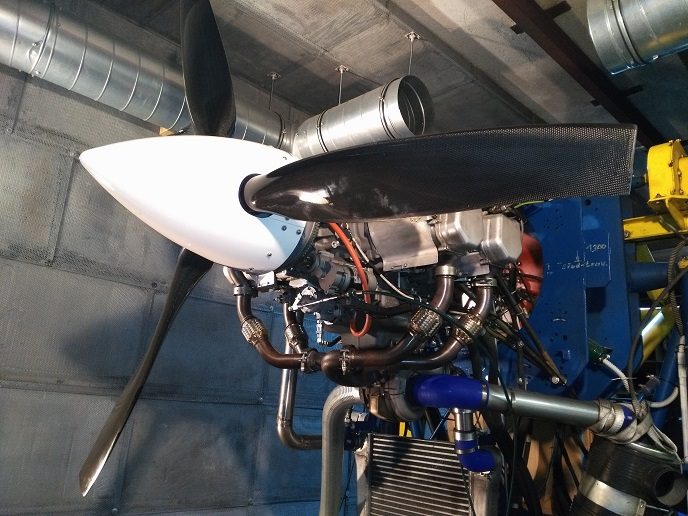Innovative propeller design enables diesel aircraft engines
Most small aircraft have traditionally used petrol/piston engines similar to those in cars. Yet, these can be suboptimal for aviation use. A better alternative is the compression-ignition design, also known as diesel. These engines achieve ignition via compression of the fuel/air mixture. Diesels’ higher compression ratio allows more efficient use of energy contained in fuel, which means better burning efficiency and lower fuel consumption. Piston engines’ simplicity and low fuel consumption translate to lighter weight and better efficiency for the aircraft. This yields improved environmental credentials and operating costs. An aircraft diesel engine uses jet fuel with low volatility, which contributes to operational safety. The use of diesel engines in aircraft would be highly desirable. However, before this is possible, a new propeller must be designed to address the problems with this type of engine. Developing a suitable propeller was the task of the EU-funded ARGOS(opens in new window) project.
Problems addressed
The first problem with jet-fuel diesel engines is that they run very roughly compared to conventional designs. The uneven torque distribution causes vibrations that eventually fatigue the propeller. This reduces its lifespan and increases risk of failure. The second problem is that propeller design must be carefully matched to the type of engine. Using a propeller designed for a petrol engine in a diesel engine compounds the fatigue problem, besides being inefficient. Project partners first experimented with neutralising the vibrations via a dampening device. In a car, the gearbox fulfils this function. However, the team rejected that option, partly since the target engine is a so-called direct-drive design lacking a gearbox equivalent. The team instead focused on propeller redesign because that would mean lower drivetrain mass and complexity. Researchers tested many combinations of propeller shapes, materials and engines. “The most important outcome of the project was the data obtained from this experimentation,” explains project coordinator Vilém Pompe. “It’s easy to say that a diesel engine runs roughly, but by how much, and why?” The ARGOS project quantified propeller response on both petrol and diesel engines.
New prototype design
Testing results contributed to the design of a completely new prototype propeller optimised for diesel engines. “Our solution involved installation of retention bearings in propeller blades,” adds Pompe, “which absorb vibrational energy. We also found suitable materials for the propeller blades and hub, which further absorb the energy.” The new propeller is heavier and more robust than propellers designed for petrol engines of the same power. Despite the extra weight, the new propeller includes minimal notches and stress concentrators. The resulting design is simpler than alternatives meant for petrol engines, while production costs are comparable. After initial design testing, followed by manufacture and validation of the prototype, testing continues in the post-project period. The team aims to fully certify a design based on the prototype and take the results to market. Based on the ongoing testing, researchers developed a slightly modified prototype now in production. This will be used for the certification process. The team plans to flight-test the propeller soon. The redesigned ARGOS propeller will enable the use of efficient diesel engines in aviation. This will make small aircraft more economical and environmentally friendly.







